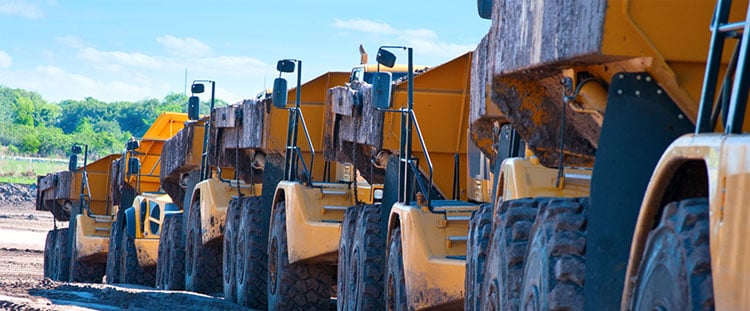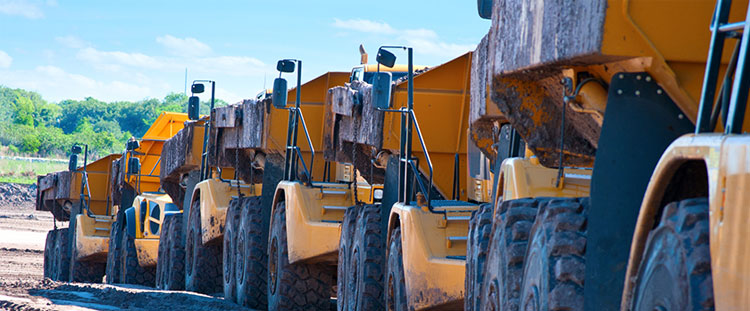
In construction, fleet management systems must be very precise to meet specific needs such as time windows, type of use and cargo capacity, especially for the diversity of access restrictions they must comply with, and the reduced warehouse management capacity that any construction site can have.
If logistics managers fail to transport deliveries on time, these construction works can just stop, triggering a chain reaction. Worse, what happens when you have a product delivery that the customer doesn’t need yet, and he doesn’t’ have a place to store them?
On the other hand, in urban logistics, any construction site within a city radius may have high environmental, urban and road impact regulation to comply with. This can stress anyone when facing a constant flow of incoming and outgoing urban deliveries at the doorstep of any home. That is why large cities have freight restriction on certain hours, to reduce travel times for the rest of vehicles.
External inspections may require commercial fleet management to stick to very narrow time windows. On the other hand, the person in charge of the construction site may need a very precise sequence of deliveries to run operations.
According to the Chilean Technological Construction Observatory, some of the biggest problems in the supply chain construction companies face are mistakes in planning, control, and inventory management, as well as a deficient warehouse automation or data system.
Logistics software must be quick, precise and flexible, but in countries like Chile, many construction companies still don’t have supply chain efficiency as a priority.
For Bit, the magazine of the Chilean Chamber of Construction (CChC), the industry requires careful planning, not only to comply with tight delivery times and stick to a small budget but to prevent any surprises in the middle of the construction works.
The constrution industry has a long way ahead, as supply chain systems are still an emerging trend.
In third party logistics, supply chain can face several restrictions. “For example, some projects lack the space to stock materials and equipment, and we cannot seize the experience of other industries. Therefore, we must make special and alternative measures”, tells Bit Sergio Maturana, professor of Industrial Engineering for the Pontificia Universidad Católica de Chile.
“Logistical errors in constructions are perceived as a common cause of lost time and money. However, when working in faraway places, large projects on in areas with hard access, failures can trigger a construction shutdown, which can impact the entire chain of operations, Carlos Erdmann, president of the Logistics Commission at the CChC, tells Bit.
In working with third party logistics suppliers (3PL), it is important to incorporate new technologies. As Mr. Erdmann states, “most of the biggest companies lack the adequate information technology to communicate permanently with their suppliers.”
"There is very advanced internal logistic software,” he says. These organize the work orders, for instance. “On the other hand, providers use other logistical software solutions, but they fail to communicate with each other," he adds.
Main mistakes in construction projects for fleet management
Let’s take these common errors that Bit presents:
- “You ask a truck to arrive at 8 in the morning, but 4 cement mixers are waiting, and they have priority. Obviously, the clutter and traffic jam can cause pollution, noise and congestion, increasing the social costs of the construction site."
- "There can be failures to tell a supplier the exact location of the project, as there is a lack of informal contacts inside the site, access restrictions, and unloading limitations, and a no definition of where must people pile up materials."
- "Some unspecified materials may arrive, and we can face out of schedule exceptions due to filing errors, as well as work order mistakes and unscheduled deliveries."
Erdmann claims that “the broad logistics operations work, but there are fine tuning failures in planning and supplies increasing our costs.”
What are the main restrictions to consider in third party logistics for construction projects?
We recommend integrating a series of operational requirements to any supply chain operations software.
1. Time windows
It is critical to add a fixed time period where customers can receive the cargo, to prevent external restrictions and avoid compromising internal operations.
2. Service times
It is indispensable to accurately calculate how much it takes to complete a delivery in construction site
3. Required attributes
It’s not the same to deliver bricks, cement or windows. The types of cargo and the size of trucks have to be very specific in work orders and route planning.
4. Vehicle assignment
Some projects require the vehicle to enter a construction site, in rugged terrain and heavy lifting around the driver. This means that for specific deliveries, some drivers must be previously certified in security or occupational risk prevention.
5. Exact location
Let's imagine we are delivering to a site where a new condo is built. Technically, a conventional online mapping software would not recognize the address, because it does not yet exist. Truck access may be open in a provisional manner. This means that the route optimization software must not only map out multiple locations but integrate with precision a good georeferencing of the delivery points.
What other restrictions do you consider important when using a fleet managing solution for construction sites?

.jpg)
.jpg)
